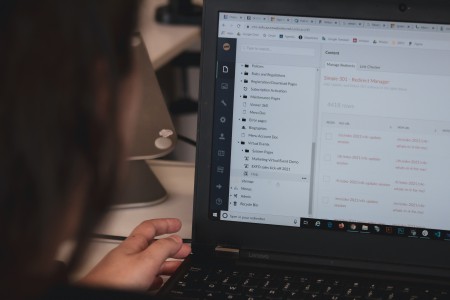Insider details on your customers ….

Customer data provides companies with insight into details such as demographics, attitudes, and behaviors, helping companies to develop high-quality goods and successful interactions for their consumers. However, it is not enough for a company to gather customer information; it must also collect information that is valuable and important. Here are some of the most effective methods for gathering valuable consumer information.
Customer data collection has several advantages for businesses, but the amount of data that can be collected is limited. In today's culture, customer privacy has become a major issue, and numerous regulatory mechanisms exist to ensure that people's personal information is protected. To avoid breaking the law, let your customers know that you will be gathering their information.
1. Compile a list of identifiers
Collecting identifiable details such as, names, dates of birth, age, gender, address, etc. is critical when you are designing an online survey or a signup form. This data will be used to provide a basis for future research and segmentation.
2. Keep track of your experiences with customers.
Identify main consumer experiences. If you have an online shop, for example, you need to know how your clients came to your site, what they clicked on, what they added to their cart, and what they ordered. You will learn about your buyers' needs by tracking each phase of their consumer path, from learning about your company to being a customer.
3. Behavior-based data
Do not limit your exposure only to consumers who have made an order. Consider what other metrics yield useful information. Consider those that could become a customer. You would want to keep track of how many people sign up for your email list, which sites they visited on your site, and how much time they spent on each page in our online store example. Analyzing this data will assist you in determining which facets of your activities are the most effective and what needs to be changed.
4. Computing automated data
You must minimize the risk of human error when collecting customer data. Automating as much of the compilation process as possible is the most efficient approach. Apps and resources like web forms and optical character recognition systems feed data directly into the database, replacing paper-based procedures that often result in errors.
5. Make your systems work together.
When multiple databases are managing the same information, redundancies and errors are common. Working with an IT provider to integrate all your apps, databases, and software solutions can help you avoid these problems. Data collected in one database will be synced and consistent across platforms in this manner, reducing manual data entry and, as a result, human error.
6. Think about who will be reading the reports.
You will have to convert data into business intelligence reports sooner or later. It's a good idea to figure out who will be reading your reports so you can focus on the most important information for them. Sales managers, for example, want to see quarterly sales figures, while human resources departments want to see labor costs versus revenue.
7. Real-time data updates
To stay relevant, businesses today require up-to-date data accuracy. Use business intelligence dashboards to collect, organize, and filter data at the touch of a button, ensuring that you never have to wait more than a day for critical information that can help you make better business decisions.
Are you looking for data collection technologies that can help you get the most out of your data? Please visit our website for a FREE consultation. We will suggest the latest technology for tracking the data you need to grow your company. We look forward to working with you and advancing your business in every way that we can.
